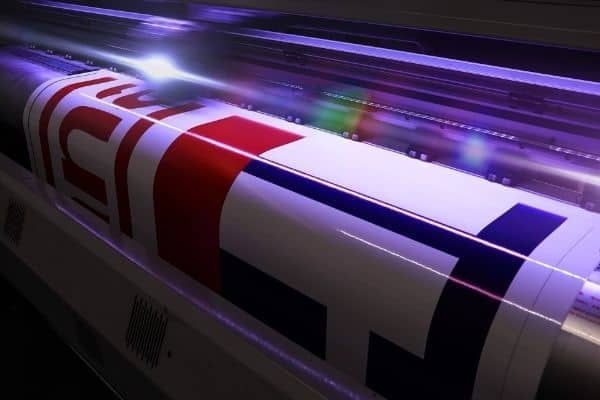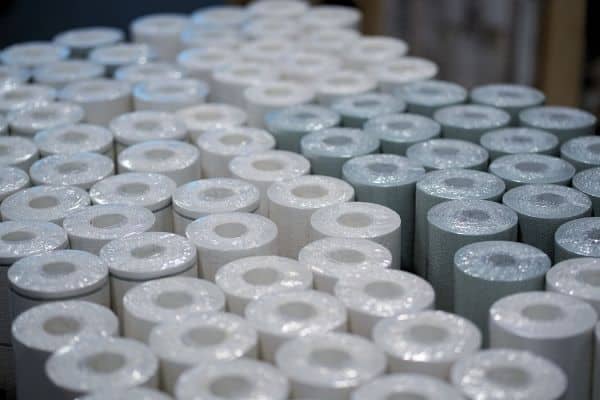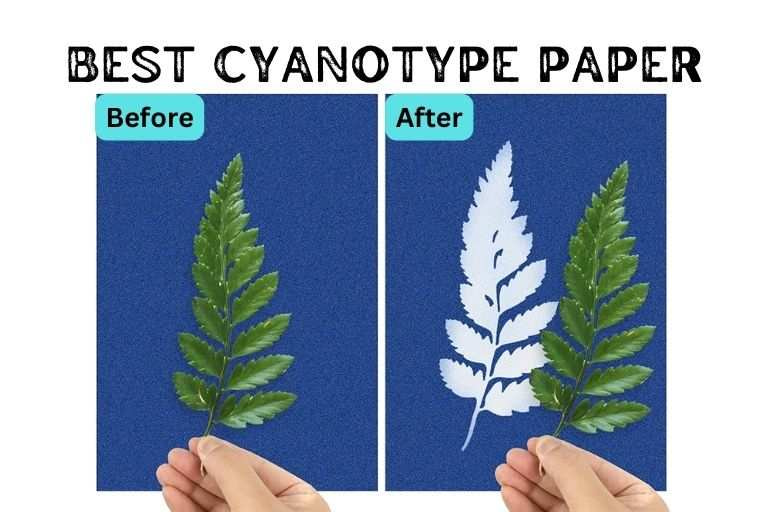Technology has ordained the field of design and architecture with its constantly upgrading devices. When working on large-scale drawings or architectural designs, you may run into the challenge of trying to find the right kind of paper to meet your needs.
Does your paper need to be see-through? Should it be durable enough to withstand constant wear and tear? Do you need extra space around the edges of the page so that your pens can bleed through?
If you are an architect or a graphic designer, chances are you have come across plotter paper more often than not. And in case you are new at this and would love to learn various ways with which one can use plotter paper, and in fact, what is plotter paper, then you have come to the right place.
Here is an ultimate guide to all that you need to know about plotter paper, its types and uses and much more.

What is Plotter Paper?
As its name implies, plotter paper is a type of paper that is specifically designed for use with plotters. Plotters can be thought of as a combination of a computer printer and a regular printer—only more precise.
Because of its precision and ability to handle large prints without smudging or ghosting, many companies choose to use plotter paper to create their signs, posters, advertisements and other forms of promotional material. Since it’s not found in your typical office supply store, you may have never seen or heard of it before now.
Read on for some tips on how you can go about purchasing your own roll today!
Plotter paper is a type of paper that is specifically made to be used in plotting machines. Plotting machines are used by architects, building or housing designers in order to create blueprints of their work, and are used for printing vector type graphics.
Apart from that, they are also used by software programs (such as AutoCAD) and other technical programs. Thus, plotter papers are mostly used to draw diagrams or layouts.
Now, plotting machines don’t work in a similar way as printers, scanners or most machines do. On the other hand, they have a special pen attached to them that moves across the plotter paper thus creating the embedded design.
There are various styles and types of papers used for printing vector type graphics on paper. Any type of plotter paper is mostly sold by the roll. Let’s dig in into these types to decide which plotter paper would suit your project the best.

When Should You Use it?
Plotter paper is an excellent choice for when you have a lot of work to do, and are spending long hours with it. It makes reading off text easier due to its larger size, and gives you more room for your drawings.
It’s probably not worth buying a pack of plotter paper if you just need a small sketchbook or if you’re only going to use it once in a while; however, there are advantages that make it worth considering.
Advantages of Plotter Paper
Plotter paper is a high-quality form of paper that is used for various drawing and writing applications.
Compared to regular copier or printer paper, plotter paper has a stronger fiber base that makes it very durable and longer lasting.
This type of specialized paper may also contain features that allow it to be used on different types of printers, such as in offices and factories.
There are several types of plotter papers designed for specific uses such as basic office drawings, CAD work, etc.
Plotter paper is ideal for extensive usage as it can bear additional weight; heavy ink coverage; frequent erasing; long writing sessions; long periods of time left out before being stored in rolls; repeated folding, crumpling or rolling up, etc.
Read: What Can I Do With Christmas Tissue Papers this Christmas?
Disadvantages of Plotter Paper
Plotter paper is not as popular as it used to be, because of its many disadvantages. They include:
Plotter paper is usually created in bulk and sold at low prices, which means that corners are usually cut during manufacturing in order to save money. The final product can therefore have a short lifespan (fading or wrinkling) or might even become unreadable after only a few months. In other words, plotter paper is one of those products you use on an as-needed basis—something you don’t want to depend on for day-to-day use.
When you need big pieces of paper (for doing floor plans for example), then plotter paper will be your best option; but if you ever need smaller sizes, don’t fall back on it—you’ll regret it!
Plotter paper is much thicker than normal printer paper (almost cardstock thick). This makes it difficult to write on with ballpoint pens and pencils. It also doesn’t take well to erasing, so don’t bother trying with either technique—you’ll just waste time smudging ink all over your work.
If you’re using medium weight or heavyweight plotter paper, it will start tearing from repeated folding. For example, if you need to make a lot of changes to a room layout by folding pieces of paper, stick with lighter weight options (the exception being when using sketching techniques). Lightweight plotter paper is flexible enough for both standard folding techniques and heavy revisions without tearing at the fold lines.
Read: A Glimpse into the World of Paper: A Printing Paper Guide
The Right Type of Plotter for your Paper
There are three types of plotter commonly used all over the world. They include – inkjet plotter, drum plotter and flatbed plotter. These three types of plotters each have a different role assigned to them.
When you are selecting a plotter paper, ensure to keep in mind if the plotter would be able to suffice your needs for any task, and can handle the texture of material that you are going to use as well as the paper size.
For example, a drum plotter can only use paper, however there are other kinds of plotters that use other materials for printing purposes. Determining the type of plotter you require will also help you work on the type of plotter paper that you will need.
Now, let’s analyze these types in detail:
Inkjet plotters are modern and highly cost-efficient, and use the inkjet technology commonly used in printers. It uses three types of colors – magenta, cyan, and yellow – to create extravagant images and graphics. It pushes these colors directly onto the plotter paper (or any other material being used for printing) and are usually smaller than other plotters.
They are mostly used for simpler rather than complicated graphics or designs. Since inkjet plotters are small in size, ensure to select material that will easily fit into the plotter printer as compared to the larger ones that are suitable for flatbed plotters.
Drum plotter is one of the most commonly used plotters worldwide. As the name suggests, it comes attached to a drum-like figure upon which the plotter paper (or the material that is being printed) lies. The pen attached to this plotter remains fixed, and it is the drum that moves to its length.
Although, the size of the drum restricts the use of only certain sizes of plotter paper, or the type of plotter paper being used.
As the name suggests, flatbed plotters use a relatively flat surface for printing, and thus comparatively larger plotting papers need not be folded when used on them. Unlike a drum plotter, the pen on a flatbed plotter is not fixed and thus a varied spectrum of colors can be used to obtain a vector type graphic. Apart from plotter paper, these plotters can also be used on metal and plastic surfaces and plywood.
However, it is necessary to ensure that the size of the plotter paper is wide enough to produce a printout in high resolution without looking cramped up.
There is one more type of plotter – Cutting Plotter.
This is as commonly used as the other three types yet it is one of the most popular plotters among its lot. Cutting Plotter produces vinyl lettering/ graphics and ready-cut mylar and is therefore a large scale cutting machine.
It is commonly used for billboard advertising, sign making and vehicle graphics. Automated plotter knives dig into the material lying on the plotter’s flat surface, thus cutting out accurate and precise cuttings of the designs stored or attached to the computer.
Thus, paper plotter cutter is yet another type of plotter that has made traditional forms of billboard advertising and sign-making easier, or else they would have been very time-consuming when done by hand.
If you are the kind of person who would want an in-depth knowledge of the entire process before even scratching the surface, then here is a YouTube link that will help you learn more about these plotters and their uses.
Read: Ultimate Buying Guide To The Best Loose Leaf Binder Paper
“Plotter: A Hard Copy Output Device | Learner’s Region”
In this video, you will learn about the definition of a ‘plotter’, what they are used for, its types, advantages, and disadvantages. So go ahead and click on the link if you would like to learn some amazing facts about the types of plotters available.
Inching Forward – What should be the size of your Plotter Paper?
If you are confused about the best size of a plotting paper that could be used for your project, then here is a small guide that will help you through the process.
In order to determine the size of your plotter paper, there are four criterions based terms that you must keep in mind:
Roll Width is the first number referred to in the specifications mentioned. Commonly used roll widths for wide plotters include 42, 36, 34, 32, 30, 24, 22, 18, 17 and 11 inches.
Roll Length is usually measured in feet, and determines how long your plotter paper roll is. Typically, plotter papers are 150 feet, 300 feet or 500 feet long. Thicker plotter paper rolls are mostly 150 ft. in length.
Core Diameter is defined as the diameter of the cardboard tube around which the plotting paper is wrapped. Inkjet plotter paper rolls are usually 2 inches in diameter, while larger machines have a core diameter of 3 inches.
Paper Weight is pretty self-explanatory, and is the weight of the plotter paper. The standard weight for a plotter paper is 24 lb bind or 60 lb text paper.
Best Types of Plotter Paper
Now that you have identified the basics of purchasing a plotter paper, you might want to know its various types available as well. Different types are used for different purposes, thus diversifying and globalizing their usage.
Here goes the commencement of your simple journey into the world of paper:
Epson Plotter Paper comes in various textures and sizes including 17” x 131 ft, 17” x 132’ Roll, 24” x 131.7 ft. and 36 x 132’ Roll and are most commonly used in Inkjet Plotters. Of course, there are other sizes available as well, and you can easily look for them online if need be. They also have various paper finishes available like matte, canvas, glossy and kraft paper. You can select more from a variety of spectrum. Epson Plotter Paper Rolls are commonly used for promotional pieces, professional layouts, indoor signage, proof displays and posters.
The largest distributor of Inkjet Plotter Paper is HP. They have come up with various series of plotter papers that are circulated worldwide. Here is a list of the DesignJet series commenced by HP to make state-of-the-art plotting papers.
Now, you can find most of these plotter papers on sale or refurbished:
Designjet T710, Designjet T710 Products, Designjet T710 Suppliers
HP Designjet T610 Printer series
HP Designjet T610 Printer series
HP Designjet Z2100 Photo Printer series
HP Designjet T1100 Printer series
HP Designjet Z6100 Printer series
While working with HP, there are a few commonly used sizes available as it mostly uses large sizes of plotter paper. Here is a size chart for your reference:
● 24 x 150 inkjet
● 30 x 150 inkjet
● 36 x 150 inkjet
● 42 x 150 inkjet
How to load Plotter Papers into HP DesignJets?
After a variety of DesignJets series to pick the best from, the question of loading the paper onto the printer arises. If you are uncertain of the process that in turn produces a haute couture selection of designs, then here is a YouTube video to help you in regard to the same.
“Loading Plotter Paper into HP DesignJet T930, T1530 and T2530 | Plotter Paper”
Through this YouTube video, you will learn about the DesignJet series produced by HP and the do’s and don’ts of inserting plotter paper into them.
More on Papers and Plotting
Epson and HP may be worldwide producers of plotter paper, but there are various other textures of plotter paper that will give your projects a pinch of grandeur. Here is a list of a few more types of plotter paper that might help you peak your designs:
Various high quality vinyl papers are available for maintaining the resolution, texture and brightness of the project at hand. The different sizes of vinyl plotter paper also come in different categories; thus you can select the one that suits you the best. Here is a list of highly cost-efficient and premium quality vinyl papers:
- Gloss Vinyl
Gloss Vinyl Plotter Paper is available in a variety of widths (38 inches to 63 inches) and lengths (150 feet to 164 feet). They are also available in many styles including frontlit gloss scrim, air release adhesive gloss, calendered gloss solvent vinyl and laminated gloss scrim. - Matte Vinyl
Matte Vinyl Plotter Paper is mostly used for projects when high tear resistance is required. - Scrim Vinyl
Scrim Vinyl Plotter Paper is available in a variety of widths (24 inches to 126 inches) and lengths (40 feet to 164 feet). They are pigment and dye compatible as well as durable and economical. - Tyvek Vinyl
Tyvek Vinyl Plotter Paper is available in a variety of widths (24 inches to 60 inches) and lengths (60 feet to 150 feet). In fact, HP is one of the most reliable manufacturers of Tyvek Vinyl Plotter Paper. They are waterproof and tear resistant, thus perfect for making banners.
Colored Plotter Paper, as the name suggests, comes in a variety of graceful and elegant colors. The most commonly available colors include pink, green, blue and yellow. It is usually a 20 lb bond paper primarily designed for wide format plotters. This plotter paper can be used for various purposes ideal for black and white line drawings, GIS, CAD and other engineering drawings. It is mostly available taped to the core rolls and untapped to the core rolls; that are 3” on a core.
Uncoated Bond Plotter Paper is used for wide format printers. It is often referred to as the Inkjet Bond Paper and offers an economically feasible way for printing black-ink line drawings that are primarily used for engineering and architectural purposes. Since the bond plotter paper does not have any coating, graphics and colored ink are difficult to be printed on such paper. However, it is the most resorted to printer while printing monochromic lines. It is also used by renowned organizations like HP, Canon and Epson.
When it comes to ink compatibility, coated plotter papers are the best to use. In fact, the instantly dried ink on this type of plotter paper naturally produces line acuity, good print quality and image clarity across various print technologies. It does not sacrifice the color accuracy or print speed of the process, thus making this type of plotter paper highly durable for billboards and signs.
And here you go! You have learned all that is to the art of plotting paper. Go ahead and make your own design using the best kind of plotter papers.
Frequently Asked Questions (FAQs)
What are plotter paper sizes?
Plotter papers are available in various textures and sizes. The sizes are spread across a selective four-dimension parameter using which you can decide which plotter paper you require. These four-dimensions include – Roll Width, Role Length, Core Diameter and Paper Weight. Here are a few examples of the standard sizes of plotter paper used in various fields:
● Engineering Drawings:
ANSI E – 34 x 44 inches
● Architectural Drawings:
ARCH E – 36 x 48 inches
● ISO Drawing Sheet Sizes
These are inclusive of the common types of drawing sheets available in various sizes as follows:
A0 – 33.11 x 46.81 inches
A1 – 23.39 x 33.11 inches
A3 – 11.69 x 16.54 inches
A4 – 8.27 x 11.69 inches
What size paper does a plotter use?
The size of plotter paper being used entirely depends on the type of plotter being used. There are three types of plotters that are diverse in their roles and work on different materials as well.
Due to the relatively smaller size of inkjet plotters, they use smaller sized papers to produce a vector graphic design. Primarily for architectural purposes, they use the ARCH C (18 x 24 inches) plotter paper.
On the other hand, the drum plotter being the most commonly used plotter uses ARCH D (24 x 36 inches) for architectural purposes.
Flatbed plotter has a flatbed which makes it easier to use larger sheets of paper, and thus the commonly used plotter paper for this plotter is ARCH E (36 x 48 inches).
What is plotter paper used for?
Plotter paper is a commonly used printing paper in plotting machines. These machines are used by architects, graphic designers and software designers to produce blueprints of their work. Thus, plotter papers are mostly used for layouts and diagrams of buildings and houses.
What is coated plotted paper?
Coated plotted paper is a kind of plotter paper that produces a smooth and bright surface after printing. Unlike uncoated plotter paper, it can use dye and colored ink to produce a banner or a billboard with utmost efficiency. The best part about this type of plotting paper is that it is highly time efficient and does not sacrifice the color accuracy of the work.
What is A1 Plotter Paper?
There are various sizes of plotter papers available that are used for different purposes. A1 size is a standard ISO drawing sheet size used in plotters and is equivalent to 23.39 x 33.11 inches/ or 594 x 841 millimeters. Other similar sizes include: A0 (33.11 x 46.81 inches), A3 (11.69 x 16.54 inches) and A4 (8.27 x 11.69 inches).
What is difference between printer and plotter?
Printer and plotter are both common words in all languages. The printers and plotters, as well as both of their role, are known by almost everyone; however, it is still unclear for most people what is difference between printer and plotter. Printers refer to devices that print text and graphics out onto paper while plotters simply print images on paper via ink (most often) but also different types of materials such as plastic sheets and fabric! Thus, depending on your needs at hand and even your preferences, one will surely be better than another depending on how much you need them!
What is a micrographic plotter?
Micrographic plotters are a variety of paper cutter that are built to make precise cuts that smaller than other types of paper cutters. To cut with precision, micrographic plotters utilize many different heads and blades depending on what they’re cutting. Although they can be used for a variety of applications, they are particularly useful in graphic design or drafting. These tools can also be used to make cuts outside normal boundaries as long as you have compatible software that can handle these custom files.
What printers do architects use?
Architects have a need for something called plotter paper. This is a type of printer paper that is specially designed for use in printers that produce architectural drawings, blueprints and other related types of documentation. It has a much higher surface finish than typical papers, because it must print on both sides without bleeding through or ghosting. Finding high-quality plotter paper can be challenging, however.
What is the difference between scanner and plotter?
Plotters are basically a type of large-format printer, which is designed for printing images on large sheets of paper. These printers are generally considered to be more professional than scanners because they have a greater maximum print size and usually produce higher quality prints. Whereas scanners are primarily used for home office tasks like scanning papers and transferring images from one device to another, however, plotters are primarily designed for commercial use. They’re typically found in advertising agencies or business offices rather than homes; although many people do own their own personal plotter at home, it’s not uncommon to see them in local libraries or schools.
How does a plotter work?
Plotters are printing devices that use pens to create high-quality images, similar to those you’d see in a comic book. As it happens, plotters aren’t very different from their inkjet counterparts; they use many of the same pieces of hardware and software. Plotters also have pens made out of heat-sensitive metal instead of ink, so they can burn onto plain paper.
Do plotters use toner or ink?
Plotters use toner rather than ink. Toner is a dry, powdery substance made of plastic beads. The printer includes a cartridge that melts and bonds with the toner to produce images on paper. The advantage of using plotters is that they do not smudge or bleed through paper like inkjet printers, so you can write notes or calculations on a printed page without having to redo anything.
Are all plotters inkjet?
If you’re not sure about buying a plotter because you only want to use it for printing images, then note that there are actually different kinds of plotters. Some are inkjet-based, while others employ toner technology. There’s even a third kind, which is laser-based, but these are rarely used by consumers.
Conclusion
Once you have a good understanding of what plotter paper is and what it can do for your business, it is time to make a decision on which product to use!
You can visit Wikipedia to know more about plotters.
We hope that we have helped you with your decision in choosing which one will be right for you. These are our top picks but if there is any other information about these or different products you would like us to talk about just leave us a comment below!

Avni Deopura
Content Writer
An SEO Expert, a Prolific Content Writer, and a dreamer currently pursuing a postgraduate degree in Master of Science in Psychology from St. Joseph’s College of Arts and Science. She is working as a Content Producer and Social Media Analyst.
End of – “Plotter Paper: An Ultimate Guide“
Related Articles
- Tombow Mono Zero Eraser Refills Review: Are They Worth It?
- Tombow Mono Zero Eraser Review: The Best Eraser for Precision Work?
- 6 Best Pencil Cap Erasers for Kids: A Must-Have School Supply
- 7 Best Toy Erasers for Kids: Top Picks for 2023
- 7 Best Erasers for Artists: Top Picks for Clean and Precise Erasing





